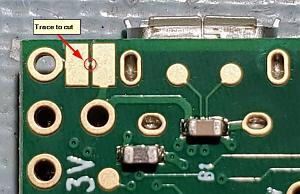
Everyone needs to cut the trace between Vin and Vusb on the Teensy before attaching the Teensy to any board.
If a board is powered and the Teensy USB is connected to a tablet or computer, which is has been powered down, it could damage the computer by back feeding power through the USB.
Some of these instructions are also posted on the WIKI